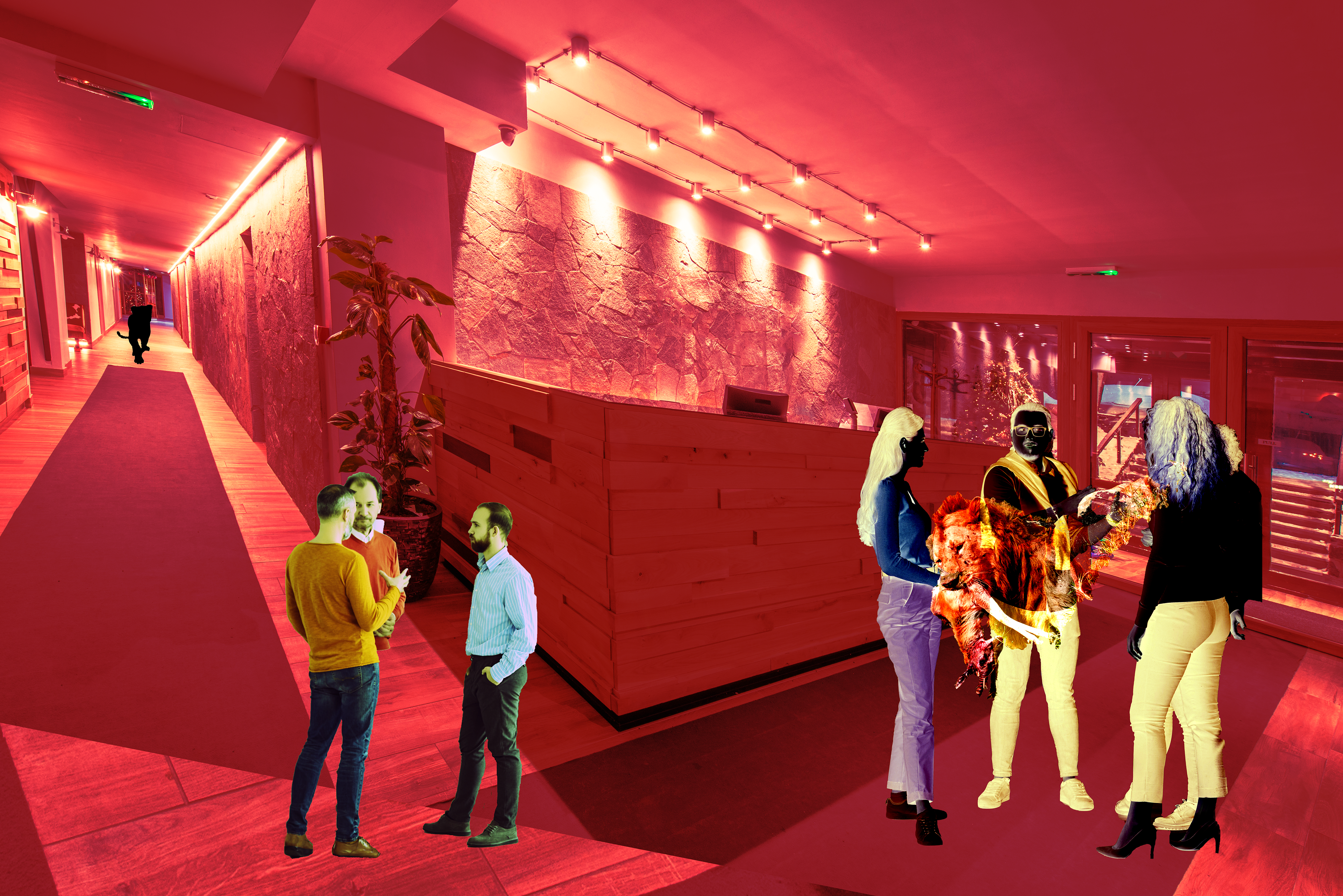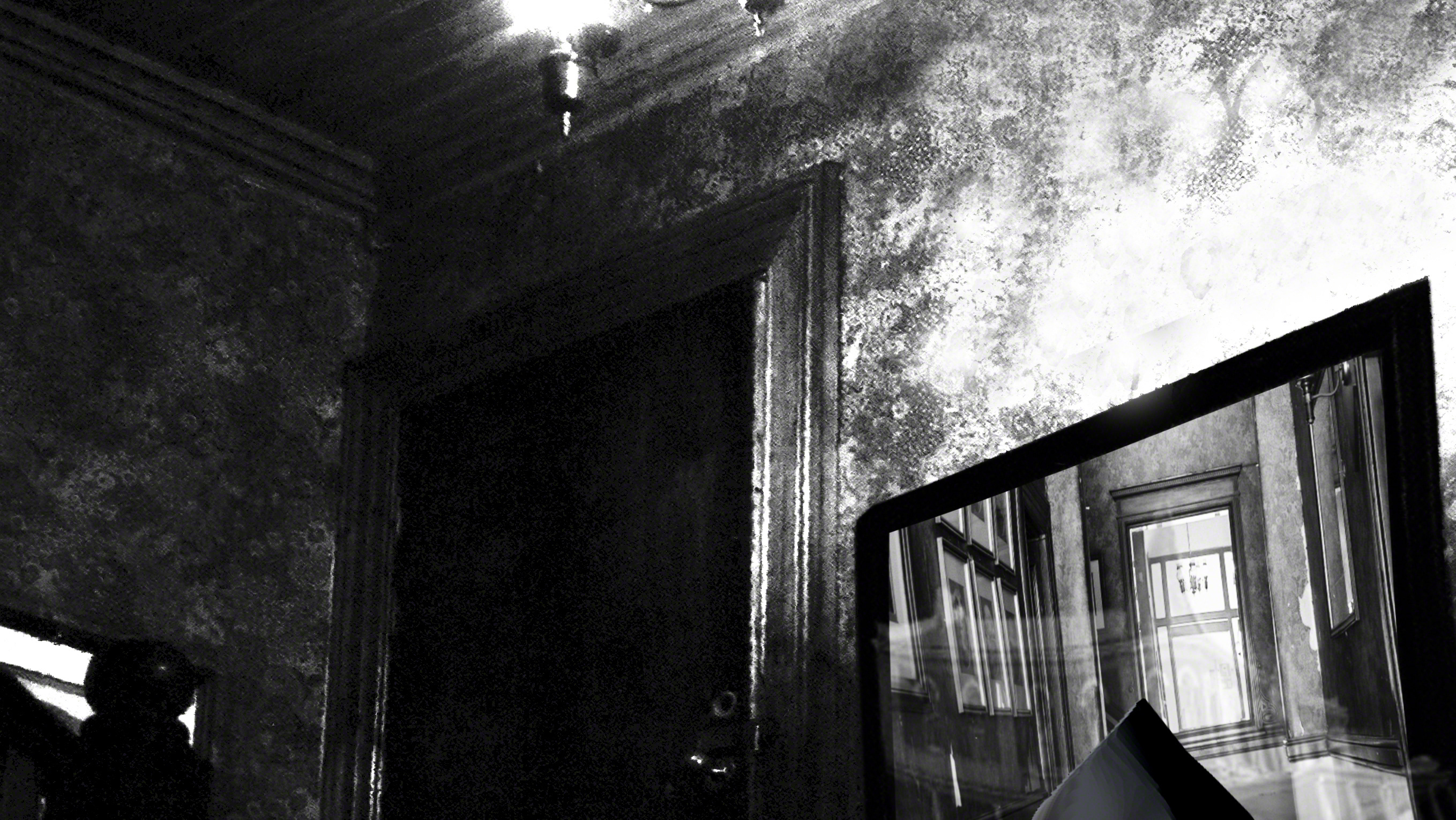
Dog eat dog

It's a man's world

Miscommunication I

Miscommunication II

Miscommunication III

Teamwork

The Fraud

The level playing field
About
Three major models for studying communication competence have been identified. The first is the trait model which “views competence as relatively enduring personality dispositions” (e.g., Steffen, J. J. et al, 1979). The second cites competence as functional communication. (see Burleson, 2007). Communication competence is composed of message production..., message processing..., interaction coordination... and social perception...” (Joann K. et al, 2013). The third is the interpersonal skill model which is the “development of behavioural repertoire, awareness of social norms and ability to choose effective behaviours from alternatives.” (Eisler, R. M.et al, 1980).
All three of these major models are expressed within the workplace, depending upon each individual’s dispensation. These three models do highlight my approach to the creation of ‘The Workhorse’. However, due to these being still images I then turned my investigations to nonverbal communication and how that can be expressed in what I was witness to in the workplace.
Nonverbal communication carries as much weight as verbal communication, sometimes even more so as it can point out inauthenticity. I have highlighted various forms of nonverbal communication in this series.
“Kinesics is communication through body movement, including gestures, posture and gait, and facial expression.”(Burgoon, J. K. et al, 2011). This communication is evident in all works where posture and gestures play an important role to convey emotions. The facial expressiveness has sometimes been purposely made neutral as a way to de-emphasise the personal and focus instead on the universal, as gestures are more universal and facial features potentially distracting. (image e.g. ‘Miscommunication I’).
Another form of nonverbal communication expressed in these works is power, status and hierarchy. “While concepts such as power, dominance, and status are not synonymous, they are related; each is concerned with the vertical dimension of human relationships.” (Carney, D. R. et al, 2007). These traits are expressed through gesture and the positionings within the images. (image e.g. ‘Dog eat Dog’).
There are also hidden elements within these works which point to the hidden machinations often at work in the workplace. (image e.g. ‘Miscommunication III’)
“Gender influences both what constitutes nonverbal displays of power for each sex (e.g., Aguinis, H. et al,2001.; Aguinis, H. et al, 1998). and the extent to which having power will influence one’s nonverbal behaviour.” There is a societal expectation of how each gender is meant to behave which determines norms within the workplace. When these norms are contravened it often leads to miscommunication and harsh judgement. These gender imbalances are explored. (image e.g. ‘Teamwork’).
Lastly, the type of nonverbal communication I have focussed on is the display of emotion. The animals within these works point to the true internal emotional feelings of the protagonists where they are unable to be expressed or revealed. “From an organizational perspective, the controllability of emotional displays has important practical implications regarding the adherence to formal and informal emotional display rules (norms) of a given workplace.” (Rafaeli, A. et al, 1989). (image e.g. ‘It’s a man’s world’, ‘Miscommunication II’).
Footnotes:
Steffen, J. J., Greenwald, D. P., & Langmeyer, D. (1979). A factor analytic study of social competence in women. Social Behavior and Personality, 7, 17-27. doi:10.2224/sbp.1979.7.1.17*
Burleson, B. R. (2007). Constructivism: A general theory of communication skill. In B. B. Whaley & W. Samter (Eds.), Explaining communication: Contemporary theories and exemplars (pp. 105-128). Mahwah, NJ: Lawrence Erlbaum*
Eisler, R. M., & Fredericksen, L. W. (1980). Perfecting social skills. New York, NY: Plenum*
Burgoon, J. K., Guerrero, L. K., & Manusov, V. 2011. Nonverbal signals. In M. L. Knapp & J. Daly (Eds.), Handbook of interpersonal communication: 239-280. Thousand Oaks, CA: Sage).**
Carney, D. R., Colvin, C. R., & Hall, J. A. 2007. A thin slice perspective on the accuracy of first impressions. Journal of Research in Personality, 41: 1054-1072).**
Aguinis, H., & Henle, C. A. 2001. Effects of nonverbal behavior on perceptions of a female employee’s power bases. The Journal of Social Psychology, 141: 537-549**
Aguinis, H., Simonsen, M. M., & Pierce, C. A. 1998. Effects of nonverbal behavior on perceptions of power bases. The Journal of Social Psychology, 138: 455-469)**
Rafaeli, A., & Sutton, R. I. 1989. The expression of emotion in organizational life. Research in Organizational Behavior, 11: 1-42)**
Citations from:
* Joann Keyton, Jennifer Marie Caputo, Emily Anne Ford, Rong Fu, Samantha A. Leibowitz, Tingting Liu, Sarah S. Polasik, Paromita Ghosh, Chaofan Wu. 2013. Investigating Verbal Workplace Communication Behaviors. Journal of Business Communication,153-169: DOI:10.1177/0021943612474990
** Nonverbal Behavior and Communication in the Workplace: A Review and an Agenda for Research Silvia Bonaccio Jane O’Reilly Sharon L. O’Sullivan François Chiocchio. 2016. University of Ottawa. Journal of Management,1-31: DOI: 10.1177/0149206315621146





